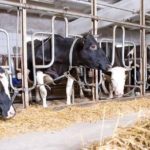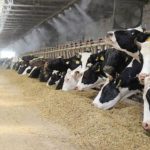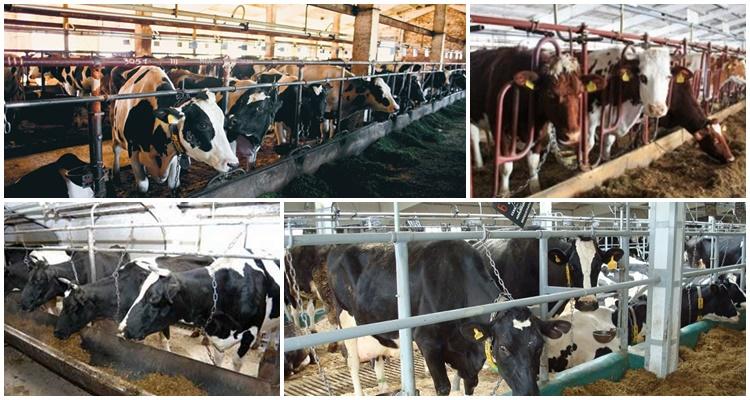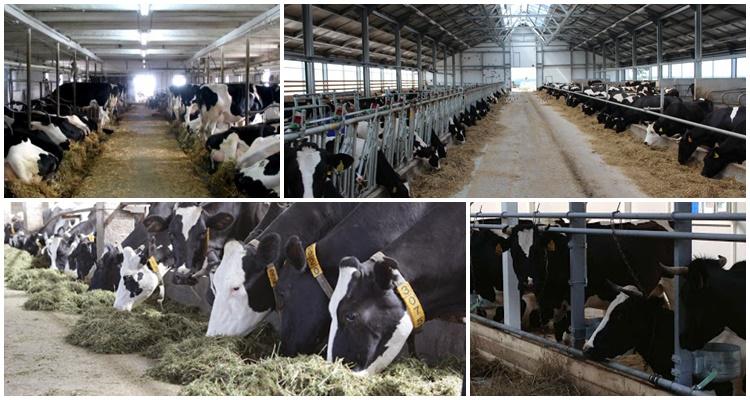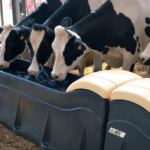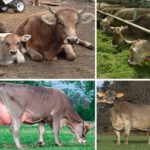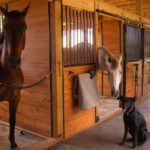Cows are kept in different ways - tied, loose or stalled. Each of them has certain pros and cons. Tether housing of cows is understood as a fairly progressive method that can significantly increase milk yield. It is important to provide the cow with good living conditions. This will help achieve high productivity and avoid the development of pathologies.
Features of tethered cows
This option for keeping cows is considered traditional. The basic idea is that a cow in a barn is tied in a stall.This helps to secure the animal in the desired position during feeding or milking. This method has different types. The animal can be tied for a whole year. There is also a combination of the tethered method and walking. In addition, there is an option when the cows are released to pasture in the summer.
For dairy breeds, this method is considered the most preferable, especially with a large population of more than 150 animals. In this case, each pet is located in a separate stall, which is slightly longer than its dimensions. A drinking bowl and feeder are placed near the head. In this case, tying the cow is easy.
The best method of fixation is the use of a metal chain. Its length should not prevent full access to water and food, but it limits the physical activity of cattle. Therefore, the likelihood of injury is minimized. Using this method allows you to select individual nutrition for each individual, taking into account the general condition and productivity parameters.
Advantages and disadvantages
Tethered housing of cows is considered more gentle compared to stall housing. In this case, the animals are constantly in the barn.
Basic Rules
To choose the appropriate housing method, it is worth analyzing the advantages of tethered and stallless housing. To limit the physical activity of cows when kept tethered, it is recommended to equip each stall with a fixation mechanism. At the same time, the main requirement for a harness is to ensure a high level of personnel safety, minimize the risk of traumatic injuries to animals, and allow cows to stand and lie down. It is recommended to restrain cows using a tie method. In this case, the chain is attached to the collar.
When constructing a stall, you should focus on the average size of the animals. Optimizing the manure removal system is of no small importance. Typically, farms have long stalls. Their size should be 1.9-2 meters. They should be equipped with a concrete feeder and partially freed from fences. Such an organization requires 20-25% of maintenance time.
A suitable stall option if there are restrictions on the front and sides is considered to be 5-10 centimeters smaller than the oblique length of the cow’s body. This helps reduce the time spent cleaning up manure and reduces the risk of contamination of the cow.
When organizing tether housing, barns are made with longitudinal placement of animals in 2 or 4 rows. This helps automate feeding, watering, milking and manure removal. To clean the premises from feces, basement manure storage facilities and flushing systems are used.
When breeding animals using this method, it is important to use stall equipment correctly. To do this, you should focus on the following criteria:
- the animal cannot leave the stall;
- the cow is securely secured during feeding and milking;
- the animal freely leaves and enters the stall, preventing other animals from entering;
- animals stand or lie freely within their part of the premises;
- it is possible to freely remove food from the feeder;
- you can easily and quickly secure and untie individual animals or entire groups;
- workers have convenient and safe access to cows;
- Farm staff keep the pets clean, putting a minimum of effort into cleaning the stalls.
Be sure to take care to use the correct milking machines. They have the following types:
- portable – used on farms with relatively small livestock;
- milking system – used in large livestock complexes.
The advantages of milking machines include:
- high milking rates;
- minimal staffing requirements.
It is also important to take care of the installation of drinking bowls. The need for water is influenced by the type of feed and its nutritional value. Also, the volume of liquid drunk depends on the physiological state of the cow, humidity and temperature parameters. For 1 kilogram of dry food, 5 liters of water are required.
When choosing drinkers, you should give preference to the following options:
- plastic - they are inexpensive, but are considered fragile;
- cast iron - they crack when hit hard;
- steel ones are considered the most popular.
When building a feeder, it is important to choose the right length. It should be equal to the width of the stall, which is 1.1-1.2 meters. The feeder should be installed 7-8 centimeters above the floor. In appearance it looks like a box in the form of a gutter.
There are folding, lifting and stationary feeders. The most convenient option is considered to be a folding one, in which the side walls rise. This makes it easier to clean the product from food residues. Such models are made of dense materials. Therefore, they are easy to clean and disinfect.
Specifics of keeping in winter
Raising cows on livestock farms in winter has certain features. During this period, it is recommended to walk pets in a pen for 2-3 hours. At the same time, they should be given rough feeding.
Tethering cows is considered a common method. This technique can be used for dairy breeds. It helps increase animal productivity. At the same time, it is important to organize the space as correctly as possible and provide the cattle with proper care.

